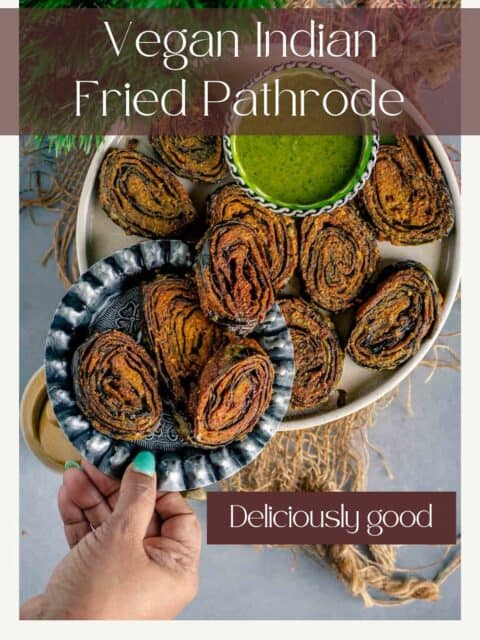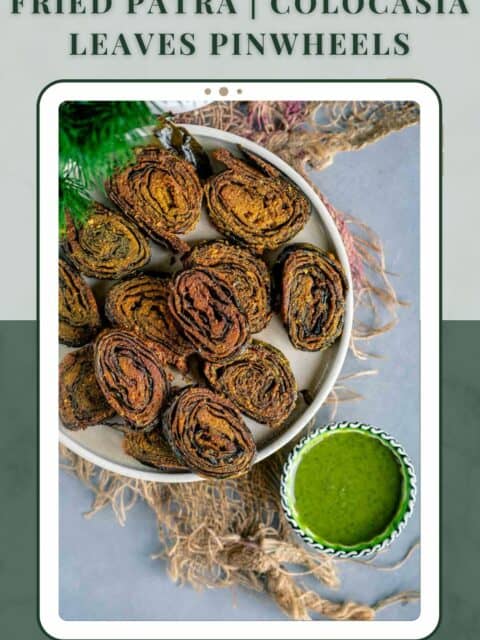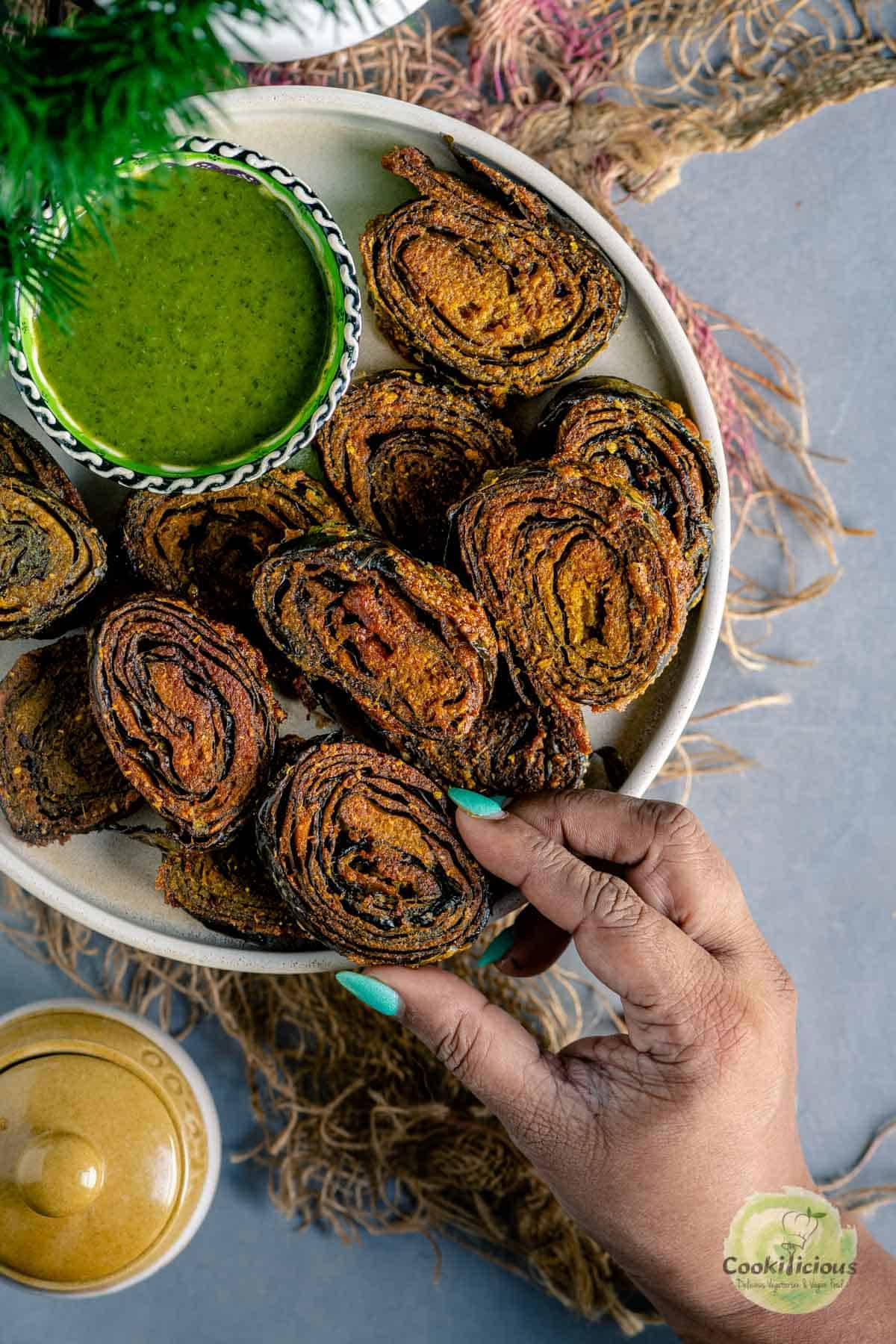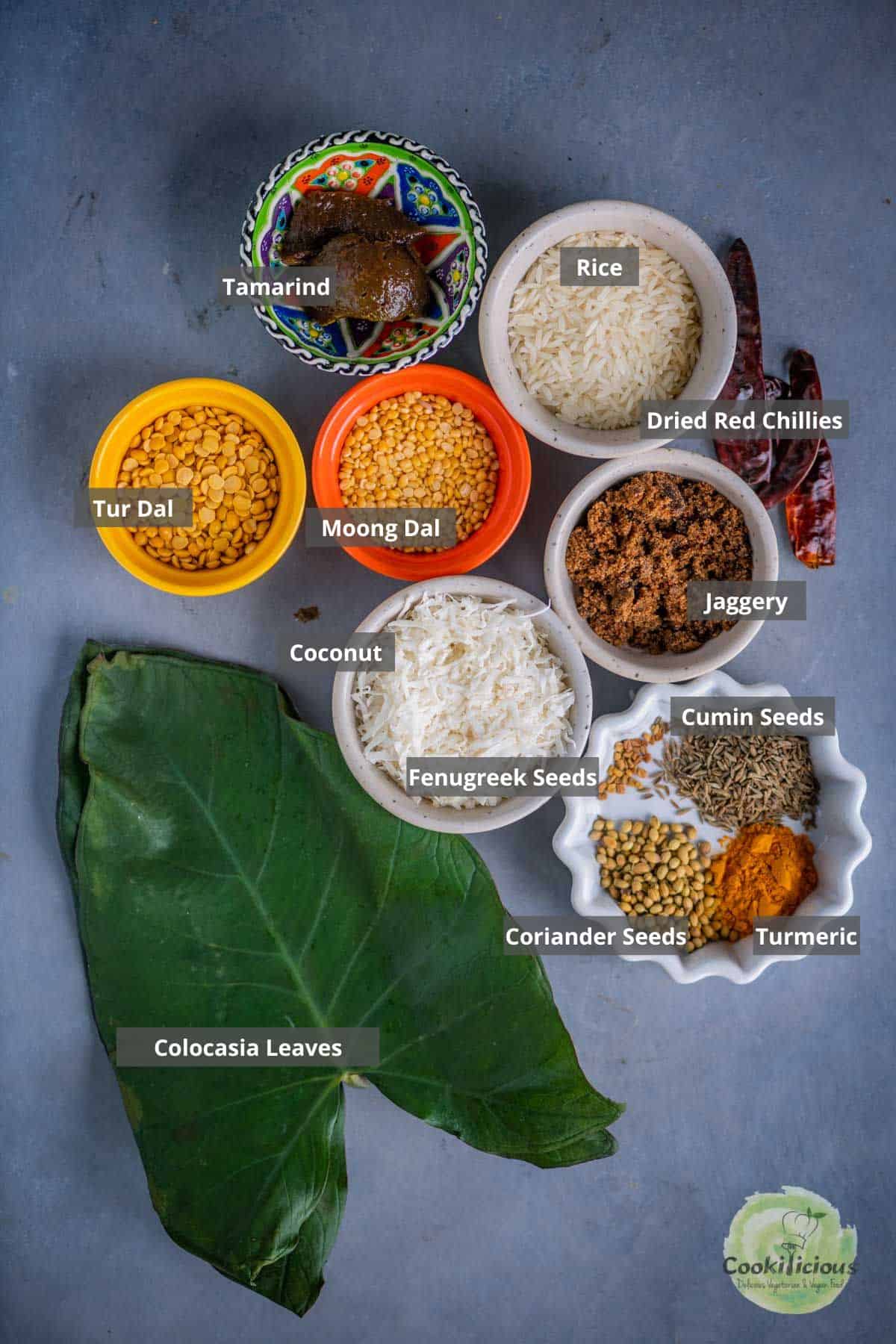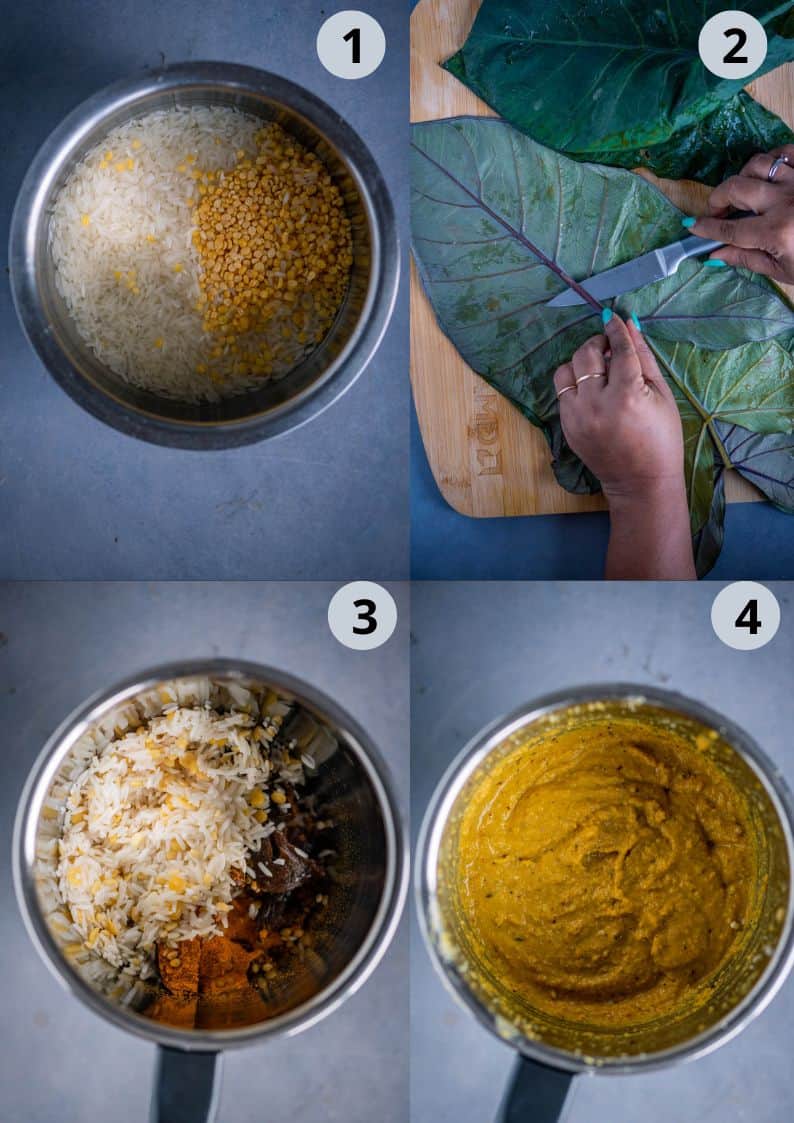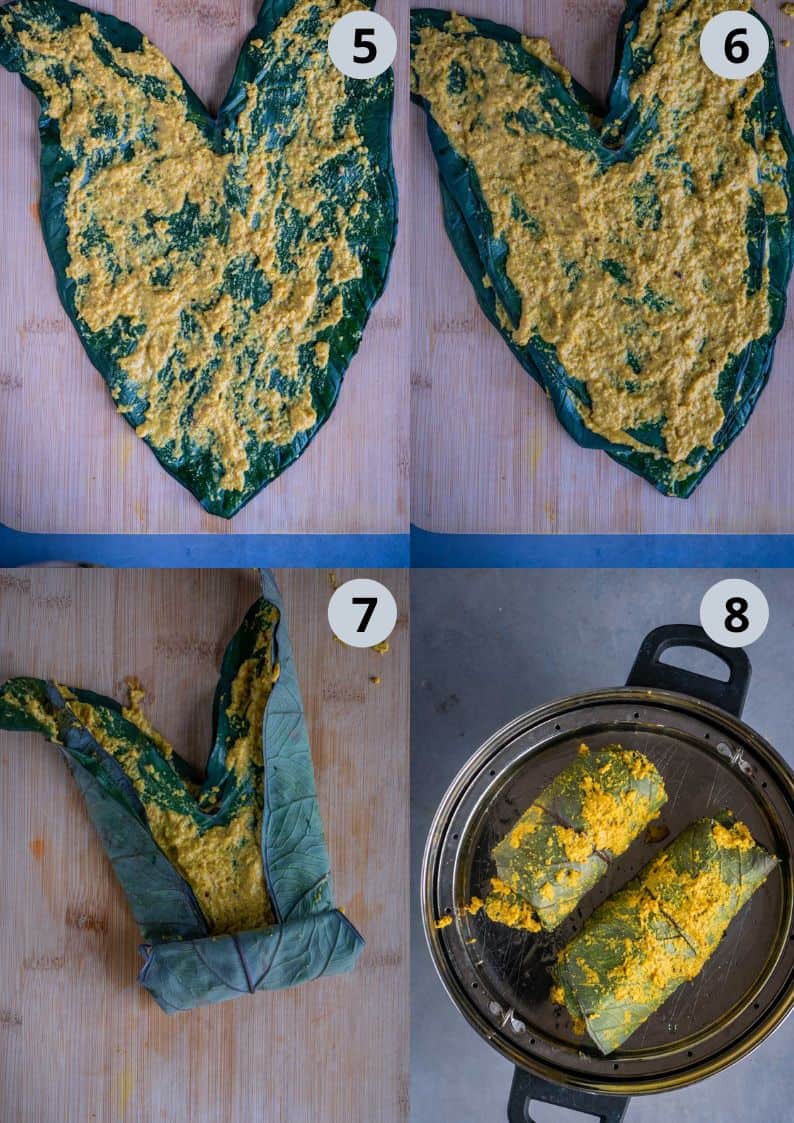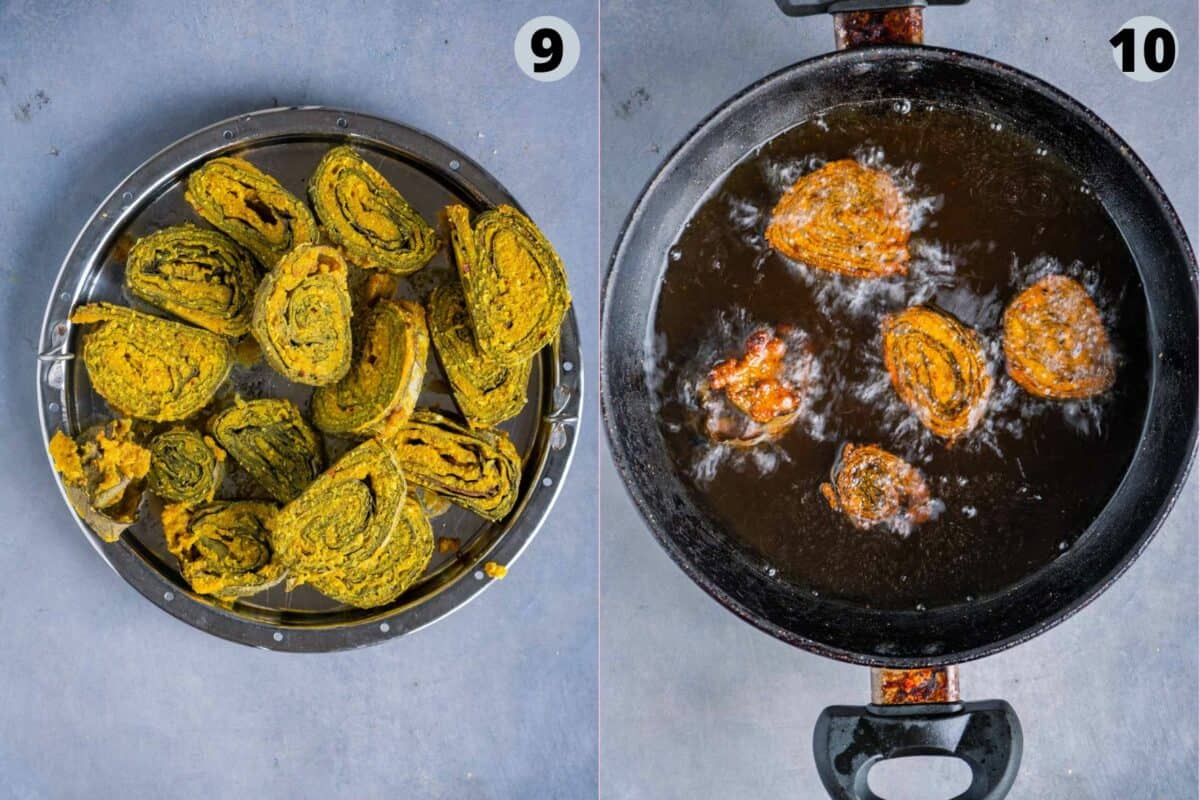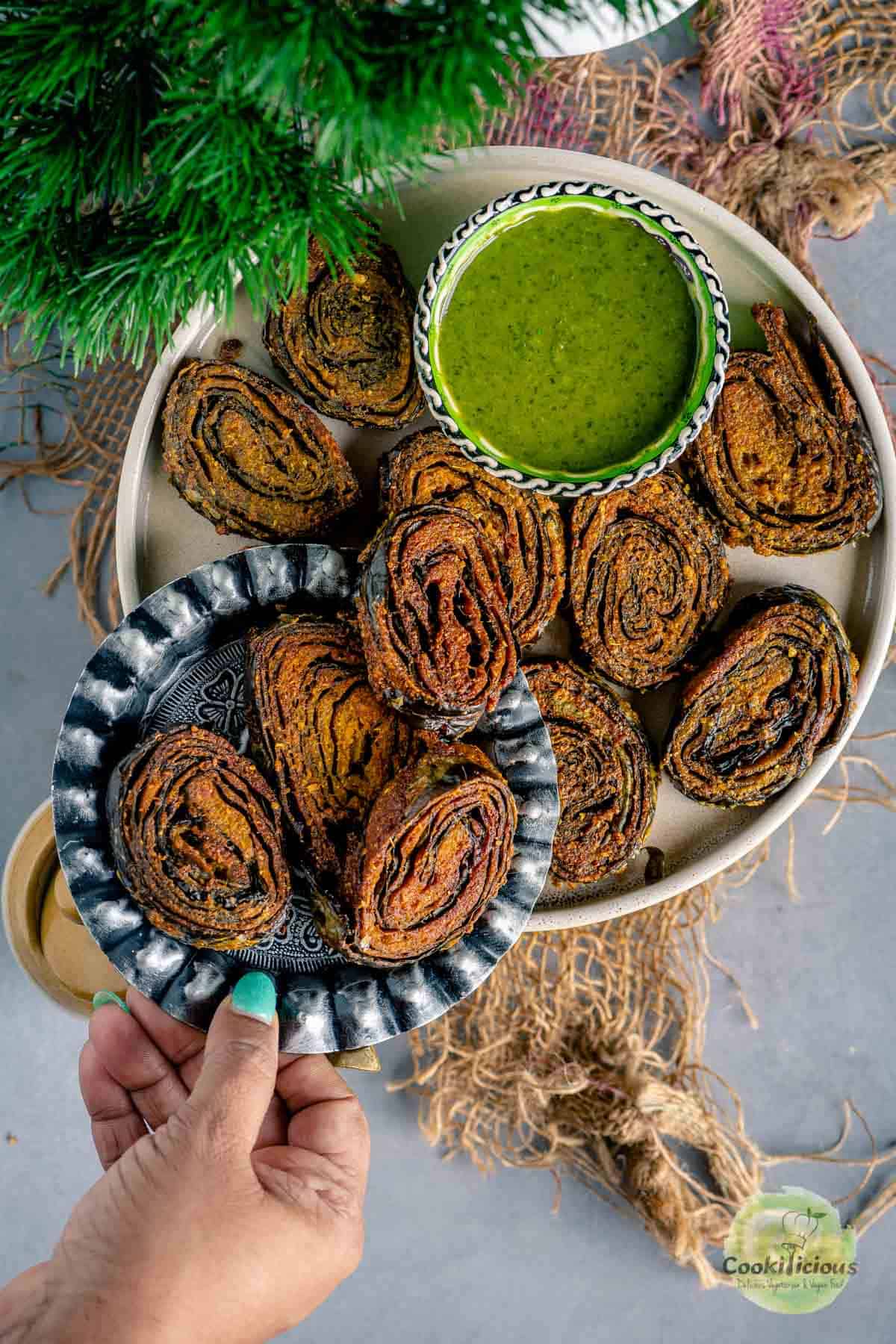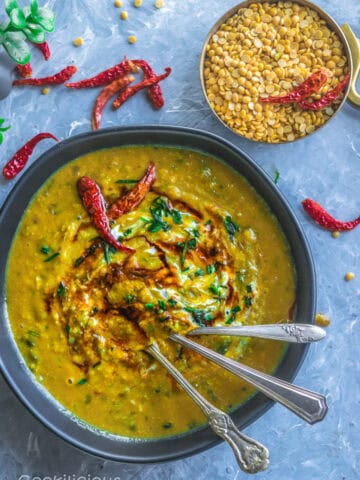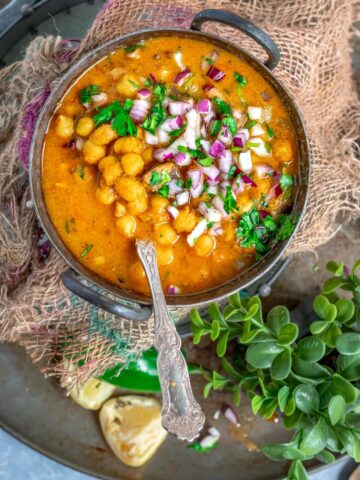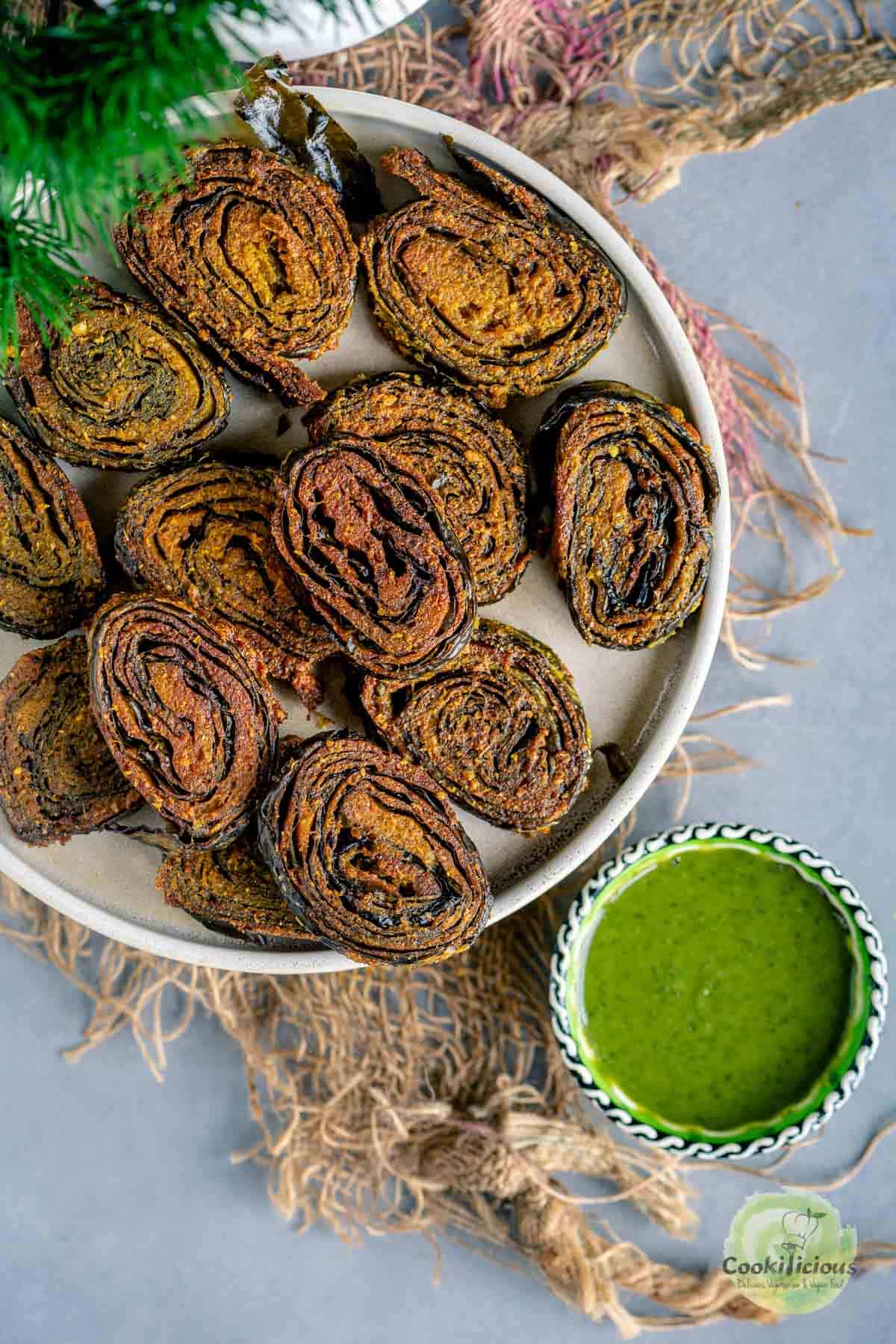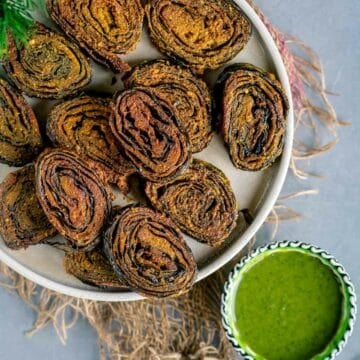Ingredients needed 🧾
How to make it 🔪
Recipe 📖
The Colocasia leaf is smeared either with besan paste or ground spiced rice and lentil coating, then steamed, sliced into pinwheels, and fried. It’s a flavorful dish with a good mix of spicy, sweet, sour, and tangy. While the leaves are the same, the masala or stuffing differs depending upon the region. Even the names vary from cuisine to cuisine. Patrode is a Mangalorean and Konkani delicacy (coastal Karnataka) and the recipe is slightly different because the stuffing is prepared with rice, lentils, and coconut. These Taro leaf rolls are called Alu Vadi in Maharashtrian cuisine and Patra in Gujarati cuisine. In both of them, the stuffing is mainly prepared with besan. In the Udipi cuisine, they make pathravade without rice. It’s an easy, and handy alternative to the traditional one. BTW, recently I got to know that you get Taro leaves in Hawaii and they are called luau leaves. Even in the Philippines, Colocasia leaves are used to make a dish called Laing. In India, they are found in Maharashtra, Udipi, and Mangalore, and they grow generously adjacent to water streams in Coastal Karnataka.
Health benefits
Low in saturated fat, cholesterol, and sodiumRich in vitamins A and CA low-calorie green vegetableHigh in fiber and micronutrientsRich in potassium and folateHelps boost heart health
You can find Alu leaves in Asian or Indian grocery stores or check with your Indian neighbor if they have this growing in their garden. That is exactly how I got my hand on these leaves. But yes, ensure that you buy them from a reliable source and cook them thoroughly to avoid their side effects. Rice - This taro leaves recipe is made using rice. Use any variety of rice because it doesn’t matter. It’s all going to be ground, so pick any variety. Jaggery is added to this masala paste to minimize the impact of itchiness from the Colocasia leaves and also helps balance the sour flavor. You can also use sugar instead. Tamarind paste is added to help balance the slightly sour taste of the leaves. If you don’t have tamarind paste, add lemon juice instead. It also helps reduce itchiness. Coconut - I have used unsweetened desiccated coconut here. You can also use freshly grated coconut, or dry coconut shreds/flakes. Spices - coriander seeds, fenugreek seeds, cumin seeds, turmeric powder, and dried red chillies are the basic whole spices that you will need to make these colocasia leaves pinwheels. Oil for frying - Use coconut oil for the best flavor.
Alu Vadi can be served warm as a snack at any time of the day. They can also be served as a party appetizer or finger food. We normally serve it as an evening snack along with Tea or Coffee or as an accompaniment with these Arbi leaves Patra. When serving, add some green chutney and/or ketchup on the side. You can also make it for festivals like Ganesh Chaturthi, and Diwali, or for the holidays like Thanksgiving or Christmas. The number of Alu Wadis may vary depending on the size of the Colocasia leaves. If after 20 minutes, you feel the rolls are not cooked, continue to steam them for another 8-10 minutes. The leaves should turn soft and the masala should be cooked and not raw when done. Slice them after they are steamed as they are easier to cut.
More unusual Indian recipes
Like this recipe? Please show your love by leaving a 5-star 🌟🌟🌟🌟🌟rating below! You can also follow me on Facebook, Twitter, Instagram, and Pinterest to see more delicious vegetarian and vegan recipes and what I’m getting up to.
